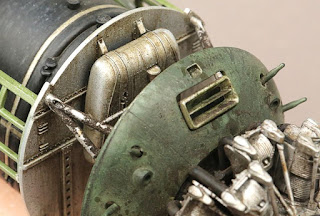 |
| Reconstructed and schematic flow pattern for forward speed. Blue = cold, red = warm. |
 |
| Flow pattern stern first. |
 |
| Flow pattern bow first. |
 |
| Bilge keel and inlets. |
 |
| Reconstructed and schematic flow of cold water (blue) and warm water (red). When traveling stern first cold water flows thru the rear small inlets into the sea chest. |
 |
| Guide plate (center) seperating the large and small inlet. |
 |
| Small inlet for reverse speed and large inlet for forward speed. |










































